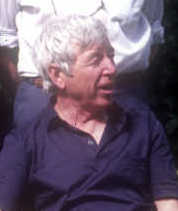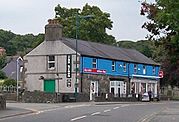Joe Brown (climber) facts for kids
Quick facts for kids
Joe Brown
|
|
|---|---|

Brown in the 1990s
|
|
| Born | 26 September 1930 Ardwick, Manchester, England
|
| Died | 15 April 2020 (aged 89) Llanberis, Wales
|
| Other names | The Master, The Human Fly, The Baron |
| Occupation | Mountain climber |
| Spouse(s) | Valerie Melville Gray |
| Children | Helen and Zoe |
| Awards | MBE, CBE |
Joe Brown (born September 26, 1930 – died April 15, 2020) was a famous English mountain climber. He was a pioneer in rock climbing during the 1950s and early 1960s.
Joe and his climbing friend, Don Whillans, were different from other climbers. Most climbers before them came from wealthy families. Joe and Don came from working-class families after World War II.
He was the first person to climb Kangchenjunga, the world's third-highest mountain. This happened during an expedition in 1955. Some of his amazing climbs were even shown on TV! Joe also helped with climbing scenes in several movies. He passed away on April 15, 2020, at 89 years old.
Contents
Early Life and First Climbs
Joe Brown was born in Ardwick, Manchester, England. He was the seventh and last child in his family. His father was a builder and a sailor who died when Joe was only eight months old.
Joe's mother had to work hard to support the family. She took in washing and later worked as a cleaner. In his book, The Hard Years, Joe remembered being told he couldn't be in the Scouts. This was because he refused to go to a church parade.
He started exploring the countryside on his own. He would camp out, play, and climb in old quarries. When he was about 16, he visited Kinder Downfall. After reading a book called Let's Go Climbing, he decided to try climbing. He famously used his mother's old washing line as a rope. But Joe later said he actually took rope from a roadworks site.
After school, Joe became an apprentice plumber and builder. In 1949, he joined the Royal Army Ordnance Corps for 18 months. During his free time, he kept climbing with friends. Once, he broke his leg badly trying to get tea. But he was back climbing just three months later!
Amazing Climbing Career
Joe Brown was known by cool nicknames like "The Master" and "The Human Fly." He became very famous for his climbing in the 1950s. He was a member of the Valkyrie Climbing Club and helped start the Rock and Ice Club.
Another climber, Ken Wilson, wrote about Joe's skills. He said Joe had a special mix of excitement, patience, strength, and technical ability. Ken also mentioned Joe's "eye for a line" and his competitive spirit. Many people agree that Joe's place in British rock climbing is truly special.
A. B. Hargreaves, another climber, reviewed Joe's book in 1967. He called it "a remarkable book by a remarkable man." He added that Joe's achievements in both rock climbing and mountaineering were huge. In just 20 years, Joe became a legend.
Joe's early climbing friend was Don Whillans. Don was from the nearby city of Salford. They were part of a new group of climbers after World War II. Unlike earlier climbers from rich families, Joe and Don came from working-class backgrounds. Joe was so famous that the Post Office once delivered a letter to him addressed simply "The Human Fly, UK."
New Climbing Routes
Joe created many new climbing routes in places like Snowdonia and the Peak District. These routes were some of the hardest at the time. For example, on Dinas Cromlech in the Llanberis Pass, he made "Cenotaph Corner" in 1952. He also created "Cemetery Gates" in 1951.
Big Mountain Adventures
Joe also achieved a lot in the Alps and Himalayas. In the 1950s, he climbed many mountains with Don Whillans and other Rock and Ice club members.
In 1955, he made history. He was part of the first team to climb Kangchenjunga. This is the world's third-highest mountain, located in the Nepalese Himalayas. He climbed it with George Band.
In 1956, Joe made another first ascent. He climbed the west summit of the Muztagh Tower in the Karakoram mountains. He did this with Ian McNaught-Davis.
Improving Climbing Gear
Besides creating new routes, Joe also helped make climbing safer. He created new types of "protection" for climbers. He is known for making some of the first "nuts." He would take regular engineering nuts, drill out the inside, and then thread a sling through them. These nuts helped climbers stay safe on the rock.
In 1966, Joe opened his own climbing shop. Today, there are three Joe Brown shops in Snowdonia and an online store.
Personal Life
On February 17, 1957, Joe Brown married Valerie Melville Gray. They had two daughters. Their first daughter, Helen, was born in 1960. Six years later, their second daughter, Zoe, was born.
Joe Brown passed away at his home in Llanberis on April 15, 2020. He was 89 years old.
Awards and Recognition
Joe Brown received special awards for his climbing. He was made a Member of the Order of the British Empire (MBE). In 2011, he was made a Commander of the Order of the British Empire (CBE). These awards were for his amazing contributions to rock climbing and mountaineering.
When he received the CBE, Joe said something funny. The BBC reported him saying, "Receiving the CBE is so strange, because it's like I'm being awarded for enjoying myself."
Joe Brown in the Media
Joe Brown was often involved in films during his climbing career. He helped with mountaineering scenes in movies like Hazard and Upside Down Wales. He also assisted with the film Five Days One Summer. In 1986, he was even the stunt double for actor Robert De Niro. This was for the climbing scenes in the movie The Mission.
Joe is also remembered for his televised rock climbs in the 1960s. Three of these were in Snowdonia. In 1967, he climbed a spectacular new route on the Old Man of Hoy. This is a tall rock column in Scotland. He climbed it with Ian McNaught-Davis and Chris Bonington. This climb was broadcast live by the BBC! In 1984, Joe climbed the Old Man of Hoy again for a TV show. This time, he climbed with his second daughter, Zoe.
In a 2010 book about British climbing, Simon Thompson wrote about Joe Brown. He said, "Joe Brown is regarded by many as the finest British climber of the twentieth century."




